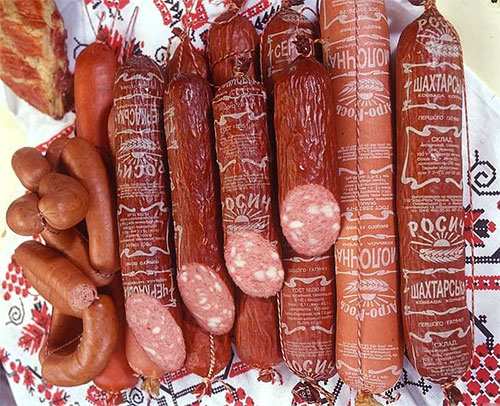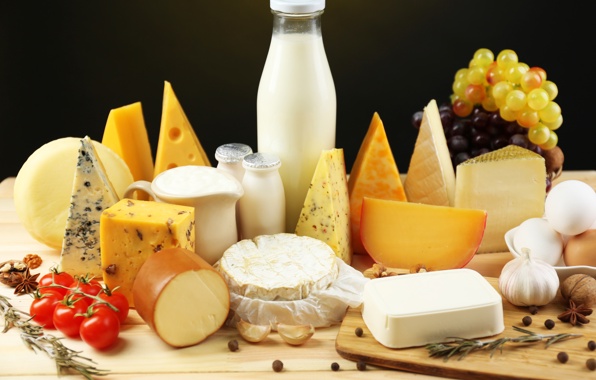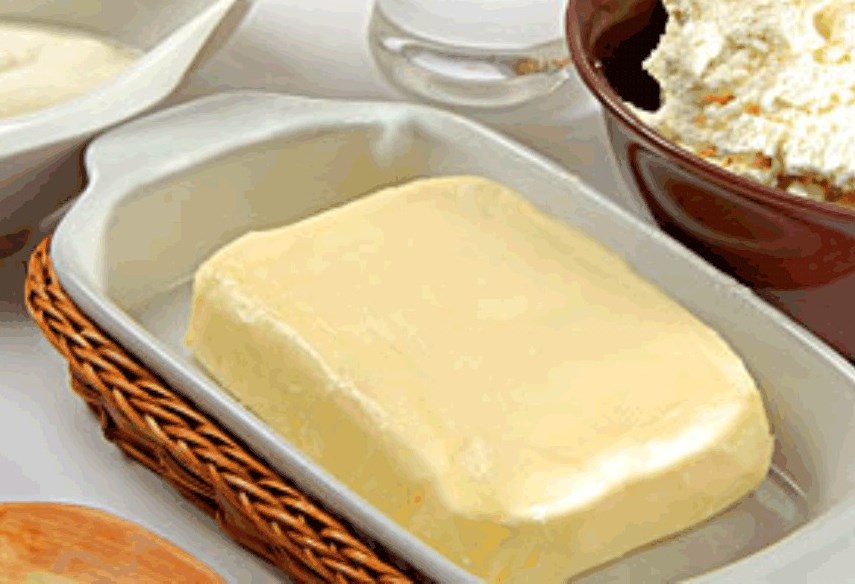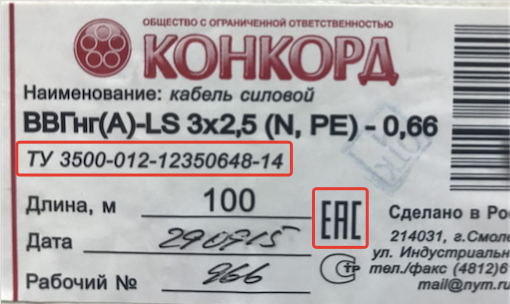Difference between technical regulation and standard. What is the difference between a gost cable and that
What is the difference between products manufactured according to GOST and according to TU? What is better and more useful? Let's study together...
GOSTs were mandatory, that is, they had to be fulfilled by everyone. Violation of the requirements of the standard entailed the withdrawal of goods from stores, a ban on the production of non-standard products.
Now products can be produced in accordance with GOST, and according to GOST R and according to TU (from specific manufacturers). All of them are voluntary.
GOST - state standard, used not only in the Russian Federation, but also in the CIS countries
GOST R - state standard of Russia
In European countries and the United States, the voluntary application of standards is the norm. All enterprises try to strictly follow the requirements of the standards, otherwise their goods will simply not be bought.
In Russia, it’s a completely different matter: the mentality is much different ... And manufacturers, even conscientious ones, began to produce food according to specifications, not to comply with the requirements of GOST and GOST R. What is not prohibited by law is allowed ...
GOSTs strictly regulate the raw materials that should be used for the production of a particular product, the additives used, the approved recipe. Producing food according to GOSTs is not always profitable for manufacturers. The cost is high. As a result, their competitiveness decreases.
Food enterprises took an easier path, began to change the recipe, use substitutes for both the main and additional raw materials. And these goods began to be produced according to TU.
Let's look at this situation with specific examples.
Meat products

So, for example, only meat raw materials are used to produce Doktorskaya sausage. premium(it completely lacks connective tissue).
Many of you remember that taste of the real Doktorskaya. From 1 kg of meat, only 700 g of sausage can be made. The cost is high, the profitability is low. It is much easier to replace some of the raw meat with soy protein.
It is many times cheaper. Yes, and its water-holding capacity is higher, that is, you can add more water, and, accordingly, produce more sausage. Previously, such sausage was called using the brand name: Doctor's Extra, Doctor's New, Doctor's Village and the like.
But then they banned manufacturers from using the brand name and confusingly similar words. But they got out of the situation - call the Doctor.
Now we can produce meat, meat-containing products and analogues of meat products.
According to standards:
In meat products, meat must be at least 60% (before 100%).Basically, only meat products are produced according to GOST and GOST R, the rest according to TU.
Meat-containing are: meat-vegetable (30-60%) and vegetable-meat (5-30%).
In analogues of meat no more than 5%.
So when choosing meat products, pay attention to which technical documentation it was produced, what is included in its composition, and in what quantity!
Dairy industry

The picture is similar in the dairy industry. They produce dairy, dairy compound and milk-containing products. Non-dairy raw materials are added to dairy-compound products, but not with the aim of replacing it, but to expand the range.
For example, yogurt with pieces of fruit or jam, curd mass with raisins.
Various non-dairy components are added to the composition of milk-containing products, which replace dairy raw materials. They should contain at least 20% milk and at least 50% milk fat. Soy protein, milk fat substitutes - palm oil, modified fats can be used here. You understand that it is much more profitable to produce milk-containing products.
Recommendations for choosing dairy products are the same. Read the label, especially the ingredients. Don't let the usual packaging fool you. Sometimes unscrupulous manufacturers use well-known brands to label their counterfeit products.
As an example, the well-known blue-blue packaging for whole condensed milk with sugar can be used for packaging milk-containing canned food, and they will also be called “Condensed Milk”. We are accustomed to simply calling it that way. They use this habit.
Oil and fat products

Now about oil and fat products. Margarine has been produced since the last century. We are already used to it. It was specially developed to replace butter. The trouble is that it is produced from modified vegetable oils- hydrogenated and interesterified. Frying on margarine is good, but the use of modified oils leads to adverse consequences.
Recently, a new product with a “purely Russian” name SPRED has appeared on our market. Translated from English - a product for spreading. The spread is creamy-vegetable, vegetable-creamy and vegetable-fatty.
And these products are different groups food products. Creamy-vegetable to dairy, it contains 50-95% milk fat.
Vegetable-creamy (milk fat 15-49%) and vegetable-fat (may be without milk fat) spread is already referred to fat and oil products. In my opinion, this is a consumer fraud with the permission of the state. These spreads can be attributed to creamy or ordinary margarines, and their price is many times higher ...
tea quality

A few words about tea. Although we have GOST for tea, many tea-packing factories produce their products according to TU.
Of course, we have Krasnodar Territory there are tea plantations, but their raw materials are not enough. Factory tea is purchased in tropical countries, and blending (mixing) is carried out in our factories different varieties teas are packaged and shipped to the market.
It is advantageous for producers to buy cheap teas, or old teas, and then mix them with more valuable varieties to give them a more or less "decent" taste.
Finding high-quality tea on the market is quite problematic. The quality of the tea leaves much to be desired.
Some signs of poor quality tea:
After brewing black tea, open the teapot and smell the tea leaves. If there is a smell of hay or grass, then the tea is old.
Look at the tea in the white cup. If at the edges of the rim of the cup the color of tea has a greenish tinge, then the tea is also old.
How to protect yourself from low-quality products?
So I gave you some examples right choice food. Of course, I would like to say that GOST products are much better and safer than TU-shnoy.
But even here there are pitfalls. Some unscrupulous manufacturers use increased consumer requirements for product quality.
They can indicate GOST on their fake goods, but not the one that regulates the quality of the product itself, but according to which, for example, packaging is produced.
In this case, I can recommend checking what kind of standard is indicated on the product packaging. It is enough to go to the Internet and enter the specified GOST in the search engine. And immediately everything will be clear. If a specific product name is written, for example, boiled sausage, and the phrase "technical conditions", "general specifications", then this product is developed according to the standard.
How is TU different from GOST
In the early 90s, manufacturers got a little slack. The state gave them the opportunity to develop and approve product formulations themselves. The purpose of this innovation was good - to improve the quality of products and diversify the range. The second goal was achieved, which cannot be said about the first. The quality of the manufactured products still leaves much to be desired.
Look at the shelves of modern supermarkets. Next to ordinary sour cream, you can find “Smetana Smetanovna”, “Smetanishka”, etc. It seems that manufacturers go to any lengths, whatever names they come up with in order to attract as many buyers as possible to their product. The fact is that these products do not have the right to be called sour cream, since they do not comply with GOST. GOST determines what products should be included in sour cream, how much natural meat should be added to sausage, and what ingredients are allowed in mayonnaise. AT Soviet times GOST requirements could not be circumvented, this was regarded as a violation of the law. But it is quite possible now. To do this, the company approves the so-called TU (technical specifications). For example, a certain meat processing plant suggests adding soy to sausages, the state determines that this additive cannot harm health, gives the go-ahead, and the product goes on sale. That is, in products manufactured according to TU, natural ingredients can be replaced with their artificial substitutes - soy, dyes, preservatives. Therefore, products made according to TU cannot boast of quality.
To prepare kvass, it is necessary to infuse the wort, wait until the yeast ferments - the process is quite long. On the other hand, you can add a sweetener, carbon dioxide, kvass-flavored chemical additives to the water and you will get a “Kvass drink”, which has a low cost.
On the shelves of modern supermarkets, products manufactured in accordance with GOST and TU, as a rule, lie side by side and even sellers often do not know (or do not want to know) the difference between them, especially since store employees are not required to tell customers where the natural product is , and where is its artificial substitute. And only an experienced buyer can distinguish one product from another by carefully studying the packaging.
Any buyer knows such names of boiled sausages as "Milk", "Doctor". However, the sausage department sells a huge number of "doctor's" and "milk" sausages, the name of which is added to the name of the manufacturer or the area where the sausage was produced. It should be remembered that only boiled sausage produced in accordance with GOST has the right to be called "Milk" or "Doctor's". If the name of the sausage contains the additions "Dairy from ...", "Doctor's from ...", or manufacturers add the words "delicacy", "extra", etc. to them, then this product is made in accordance with the specifications, and, accordingly, the quality of this product is not as high as that of a product manufactured in accordance with GOST.
Electrical products are presented today on the market and in stores in a wide range. The number of types and brands of cable and wire products is very large. This allows you to quite successfully and quickly solve problems related to the implementation of electrical work.
When carrying out such work, the quality of cables and wires plays a significant role. The conditions for the production of goods must comply with GOST. Then we can talk about high quality. Deviating from GOST and independently developing technical conditions (TU), enterprises want to save money and get super profits. Due to the manufacture of cable products according to specifications, the market is full of low-quality and cheap wires and cables.
In order not to encounter accidents and unpleasant situations, trust the cable products that are manufactured in accordance with GOST. It is better to bypass the cable made according to TU. For wiring, the use of such a product is fraught with consequences. According to statistics, more than half of household fires occur due to poor-quality wires and cables.
This article is a kind of addition to the topic underestimated cable section. And in this topic, I would like to tell you what you should pay attention to when choosing a cable and how cable made according to GOST differs from the cable made according to specifications.
Cable according to GOST or TU what to choose?
For those who are not in the know, I will talk about the situation that is happening today in the market of cable and wire products. Cable selection is difficult task. After all, it is very difficult or almost impossible to find a quality product, despite the huge number of electrical wires on the counter.
in specialized or hardware store you can find electrical products of any section and for every taste. The whole point is that 99 percent of the goods offered are not worth buying. After all, wires of this quality carry a danger.
I wonder if everyone knows what's different GOST cable and a cable produced according to specifications. Many of us have not heard at all that cable products must be produced according to any regulatory standards.
In the USSR, the production of wires and cables was carried out in accordance with GOST - the state standard mandatory for use in areas determined by the preamble of the standard itself. Certain requirements were imposed on the quality of the conductive material, the thickness and quality of the insulating covers. Couldn't be broken established norms. In Soviet times, if you bought a wire with a cross section of 2.5 square meters. mm., then they could be 100% sure that the cross section in it is 2.5 square meters. mm.
Later the state and some interested persons”decided that it was too boring to follow the GOSTs, and there is no place for freedom and maneuvers there. Without thinking twice, these individuals came up with technical conditions (TU). Technical requirements are established in TU. They must be satisfied by a specific substance, material, product or group of them. The specifications also specify procedures that allow you to determine how these requirements are met.
It seems that there is no difference between GOST and TU. After all, this is also white paper that lists specific requirements. True, they relate only to a specific product for which this specification is issued. But this is only at first glance. TU is far from analogous to GOST. You can write specifications for a specific product (cable, in our case). Therefore, manufacturers have the opportunity to specify anything in the TU.
Thanks to the appearance of technical specifications, the conductor products on the market have become very inferior in quality. The manufacturer decided to reduce the thickness of the insulating covers, both the overall sheath of the wire and the sheath of the current-carrying wires, and to underestimate the cross-section of the current-carrying wire by 10-40 percent. The manufacturer simply indicates all these changes in the technical specifications, so it is believed that he does not violate any norms.
Unscrupulous manufacturers have developed techniques, thanks to which they began to underestimate the cross section of current-carrying conductors. One of these techniques is a reference to paragraph 2.2 in GOST 22483-2012 (previously it was GOST 22483-77 P 1.4. a). Paragraph 2.2 states that, subject to compliance electrical resistance(requirements of this standard) nominal and actual cross-section may differ.

That is, if the manufacturer complies with the standards for resistance, then he can reduce the cross section. It is unfortunate that in practice these rules are not respected. Manufacturers have long set the main goal of reducing the cost of production. By reducing the cost of conductive wire material, the manufacturer achieves this goal admirably.
There is another important drawback in that the wires are produced according to technical specifications, and not according to GOST. The manufacturer reduces the thickness of the core insulation and the “common” sheath. Because of this, the quality of insulation is reduced, and sometimes very significantly. In this case, the electrical insulating material has the same composition. That is, the material has the same characteristics, but its amount in insulation decreases.
Why do cable manufacturers make cables not according to GOST but according to TU?
The answer to this question is very simple. The manufacturer wants to charge competitive prices and make a big profit. It saves on the materials used, thereby reducing the cost of manufacturing products.
Sellers in electrical stores do not hide the fact that it is more profitable for them to sell wires produced according to specifications. After all, the price of products manufactured according to GOST is higher. Buyers most often do not pay attention to such a "trifle" as compliance with GOST. They will go to the store where the wire is cheaper, despite the fact that it is made according to specifications.
It turns out that both sellers and manufacturers are not busy supplying our customers with quality goods, albeit more expensive ones. Their main goal is not to lose customers. After all, if they sell expensive quality wire, then the buyer will make a purchase from a competitor who sells cheaper.
A policy with specifications is aimed at a person who does not understand all technical points manufacture of cable and wire products and chooses the cable based on price alone. A simple man in the street naively believes that he is buying a quality product. And these buyers are about a hundred percent.
And what is especially bad is that it is rarely possible to find produced according to GOST wire in a general electrical store. They are simply not for sale. In modern realities, you can buy such a wire only through an organization (if possible).
This can be done by ordering a large batch from the manufacturer. Factories still produce cables and wires in accordance with GOST, but mainly for industrial use. For domestic needs, they produce wires according to specifications.
The need to choose cable products with the required properties is faced by specialists from design organizations, employees of the energy services of enterprises servicing industrial electrical installations, as well as owners of private houses and apartments during the installation of electrical wiring. For a preliminary assessment of product quality, first you need to familiarize yourself with the certificates confirming the compliance of the cable characteristics with certain standards, and also figure out what is the difference between them. Such information should be available on the manufacturer's website. Next, we will tell you what the GOST and TU cable is, as well as which option is better to choose for home wiring.
What's the Difference?
Regulatory document containing a list technical requirements for any product (in particular, for wire and cable products), there may be GOST (state standard), or TU (technical specifications). What is the difference between these documents and which is better to choose?
The State Standard (GOST) is developed by government agencies and is currently being approved by the Interstate Council for Standardization, Metrology and Certification. The subject of state standardization is usually products of intersectoral purpose. Specifications (TS) are created by the manufacturer of products and approved by the ministry of the relevant industry.
The heyday of standardization of production fell on Soviet period when all enterprises were state-owned. Any product had to meet the standard. There was a hierarchy, at the head of which were state standards(GOST), industry standards (OST) ranked lower, specifications (TU) were the youngest in this structure. With the collapse of the USSR and the emergence a large number cable manufacturers private form property, old system quality control collapsed.
Certification of any product (including conductors) for compliance with GOST is a costly undertaking and requires compliance with a number of bureaucratic procedures. Of course, all costs incurred in this case are included in the cost of the cable. The difference between the TU certification procedure is that it is much simpler and cheaper, which is better for the manufacturer. On the one hand, it can be assumed that a cable certified according to TU should be cheaper than a cable according to GOST. But the difference lies in the fact that the specifications are made by the manufacturer himself, which most often leads to a decrease in product quality. From this point of view, it seems that it is better to choose a cable that is certified according to GOST, since in the development of this document, in contrast to specifications, uninterested people took part government bodies, although in the current conditions, the presence of a state certificate, unfortunately, does not guarantee high quality product.
Standardization received a new impetus after the creation Customs Union, with the creation of which the technical regulation "On the safety of low-voltage equipment" appeared. In accordance with this document, at present, all manufactured cable products are subject to certification for compliance with GOST. This applies to manufacturers of all forms of ownership of the EAEU member countries.

What is better to choose?
From a practical point of view, if you want to, it is completely insufficient to focus only on what normative document(standard or TU) correspond to its technical specifications. Let's single out the most important points this process:
- before buying a conductor product, you must obtain information about its manufacturer;
- on the manufacturer's website, make sure that there are certificates confirming the compliance of the goods with GOST or TU;
- request a certificate of conformity from the seller of the product;
- it is better if the coil or drum on which the conductor products are supplied has the manufacturer's branded labels;
With these simple steps, you can easily distinguish a GOST cable from a specification. If it is not possible to determine when and by whom this conductor was released, it is better to refrain from buying. AT last resort, you can do the following:
- Visually assess the condition of the wire insulation. If there are traces long-term storage, especially in the sun, which is best determined by the presence of fragmentary changes in the color and texture of the insulation (for example, it has become rough and brightened in places), it is strongly not recommended to purchase a cable.
- After bending the cable, inspect the bend for microcracks that may occur on a poor-quality dried sheath.
- Measure the diameter of the conductor. To do this, you can use a caliper. Based on the value obtained, we calculate the cross section of the core using the circle area formula. If the core is multi-wire, the diameter of one wire is measured, the cross section is calculated and multiplied by the number of wires in the core. Learn more about that, we told in a separate article.





